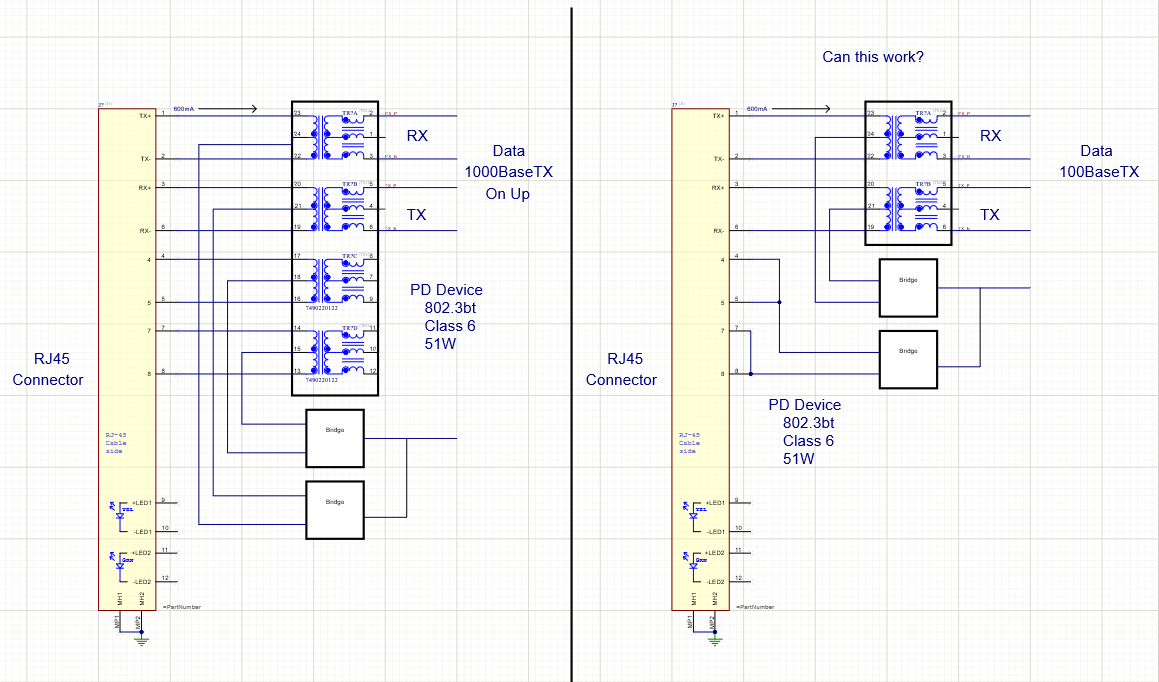I am designing a POE++ PD device that operates up to Class 6 and has a 100BaseTX data interface and looking for components for the front end that conserve real estate.
There are fewer integrated choices at this level and it looks like the only 802.3bt magjacks and circuit examples ar for 1000Base T and up with a transformer for each wire pair.
Is it required to have a transformer for all wire pairs in the 802.3bt standard or can I use a smaller Lan transformer for the TX/RX pairs and tie the other together?
Also I would like to understand the current paths on this topology. A popular chart says that the maximum current for type 3 4PPOE is 600mA per pair. What does this look like on a diagram?
This is a diagram of what I am thinking of.



